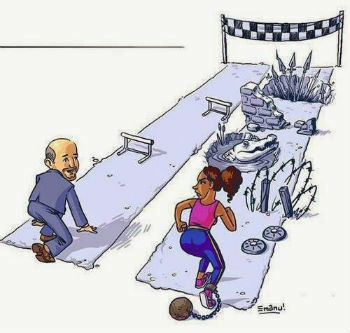In contemporary societies there is an intensification of the cult of the body, where individuals experience a growing concern with image and aesthetics.
Understood as cultural consumption, the practice of cult of the body is today a general concern, which permeates all social classes and age groups, supported by a discourse that sometimes uses the aesthetic issue, sometimes the concern with the health.
According to Pierre Bourdieu, French sociologist, body language is a marker for social distinction, which puts food consumption, culture and form of presentation - such as clothing, hygiene, care with the beauty etc. – as the most important ways to distinguish yourself from other individuals.
In modern societies there is a growing concern with the body, with the diet and excessive consumption of cosmetics, driven by basically due to the massification process of the media from the 1980s onwards, where the body gains more space, especially in the media media. It is not by chance that it was during this period that the two largest Brazilian magazines focused on the theme emerged: “Boa Forma” (1984) and “Corpo a Corpo” (1987).
However, it was Hollywood cinema that helped to create new standards of appearance and beauty, spreading new values of consumer culture and projecting images of glamorous lifestyles to the world whole.
Likewise, we can think about television, which broadcasts images of perfect bodies through the most varied formats of programs, advertisements, soap operas, movies, etc. This leads us to think that the image of “eternal” youth, associated with the perfect and ideal body, crosses all age groups and social classes, composing different styles in different ways of life. In this sense, image factories such as cinema, television, advertising, magazines, etc., have contributed to this.
Do not stop now... There's more after the advertising ;)
Television programs, magazines and newspapers have dedicated spaces in their increasingly larger schedules to present innovations in the cosmetics, food and clothing sectors. Advertisements in these media are all the time trying to sell what is not available on the shelves: success and happiness.
The rampant consumerism generated by the media in general focuses mainly on teenagers as prime targets for sales, developing stereotyped clothing models, the clothing industry. cosmetics launching every day new reducing creams and gels to eliminate "undesirable forms" of the body and the pharmaceutical industry making high profits with drugs that inhibit the appetite.
Concerned with the unbridled pursuit of "perfect beauty" and excessive vanity, under the influence of the most varied means of communication, the Society Brazilian Plastic Surgery presents an estimate that about 130 thousand children and adolescents underwent operations in 2009 plastic.
Evidently, the existence of body care is not exclusive to contemporary societies and that we must pay special attention to good health. However, body care should not be as intense and dictatorial as it has been in recent decades. We must always respect the limits of our body and ourselves.
Orson Camargo
Brazil School Collaborator
Graduated in Sociology and Politics from the School of Sociology and Politics of São Paulo – FESPSP
Master in Sociology from the State University of Campinas - UNICAMP
Would you like to reference this text in a school or academic work? Look:
CAMARGO, Orson. "Media and the cult of body beauty"; Brazil School. Available in: https://brasilescola.uol.com.br/sociologia/a-influencia-midia-sobre-os-padroes-beleza.htm. Accessed on June 27, 2021.



